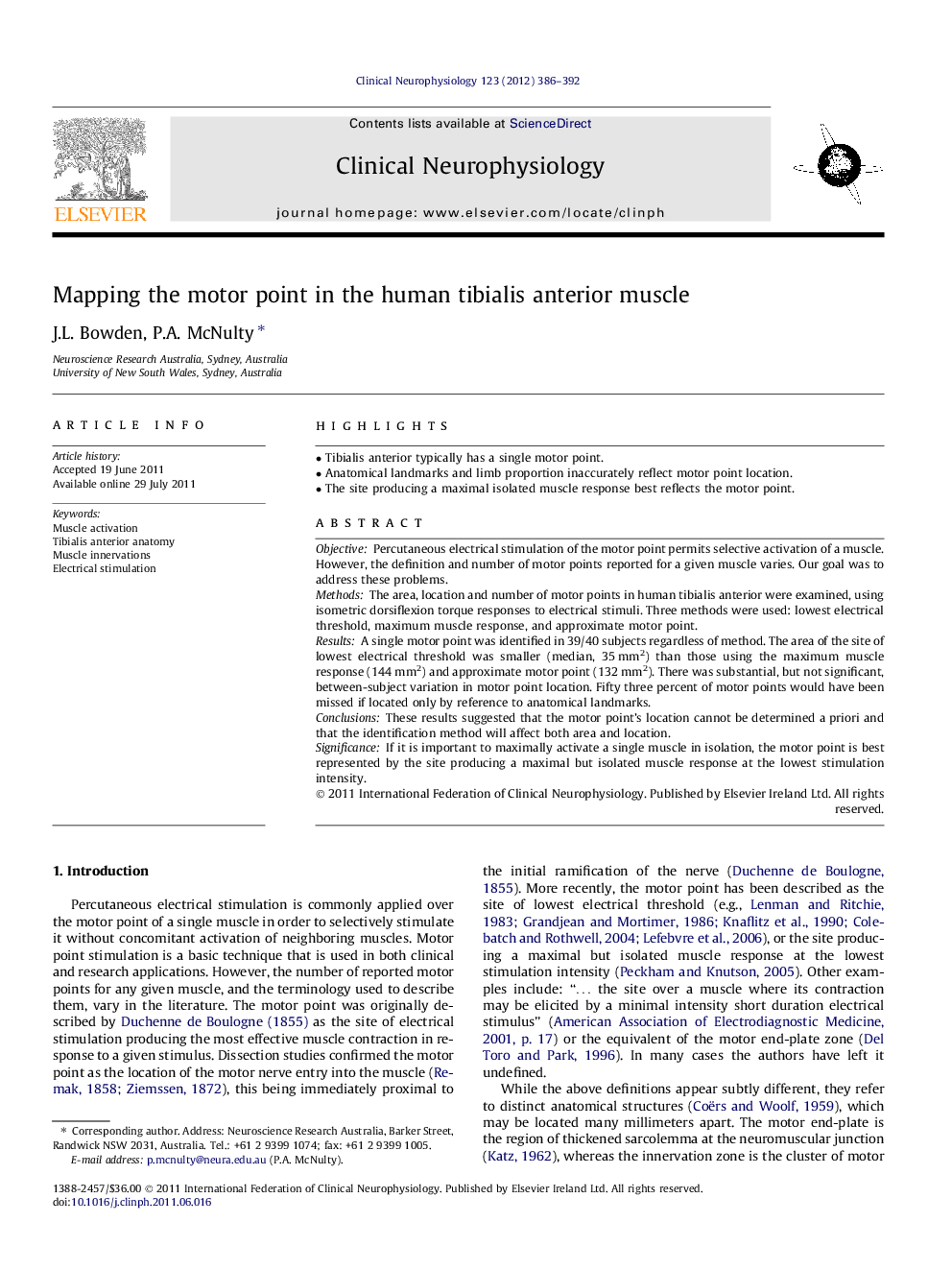| Article ID | Journal | Published Year | Pages | File Type |
|---|---|---|---|---|
| 3045639 | Clinical Neurophysiology | 2012 | 7 Pages |
ObjectivePercutaneous electrical stimulation of the motor point permits selective activation of a muscle. However, the definition and number of motor points reported for a given muscle varies. Our goal was to address these problems.MethodsThe area, location and number of motor points in human tibialis anterior were examined, using isometric dorsiflexion torque responses to electrical stimuli. Three methods were used: lowest electrical threshold, maximum muscle response, and approximate motor point.ResultsA single motor point was identified in 39/40 subjects regardless of method. The area of the site of lowest electrical threshold was smaller (median, 35 mm2) than those using the maximum muscle response (144 mm2) and approximate motor point (132 mm2). There was substantial, but not significant, between-subject variation in motor point location. Fifty three percent of motor points would have been missed if located only by reference to anatomical landmarks.ConclusionsThese results suggested that the motor point’s location cannot be determined a priori and that the identification method will affect both area and location.SignificanceIf it is important to maximally activate a single muscle in isolation, the motor point is best represented by the site producing a maximal but isolated muscle response at the lowest stimulation intensity.
► Tibialis anterior typically has a single motor point. ► Anatomical landmarks and limb proportion inaccurately reflect motor point location. ► The site producing a maximal isolated muscle response best reflects the motor point.
